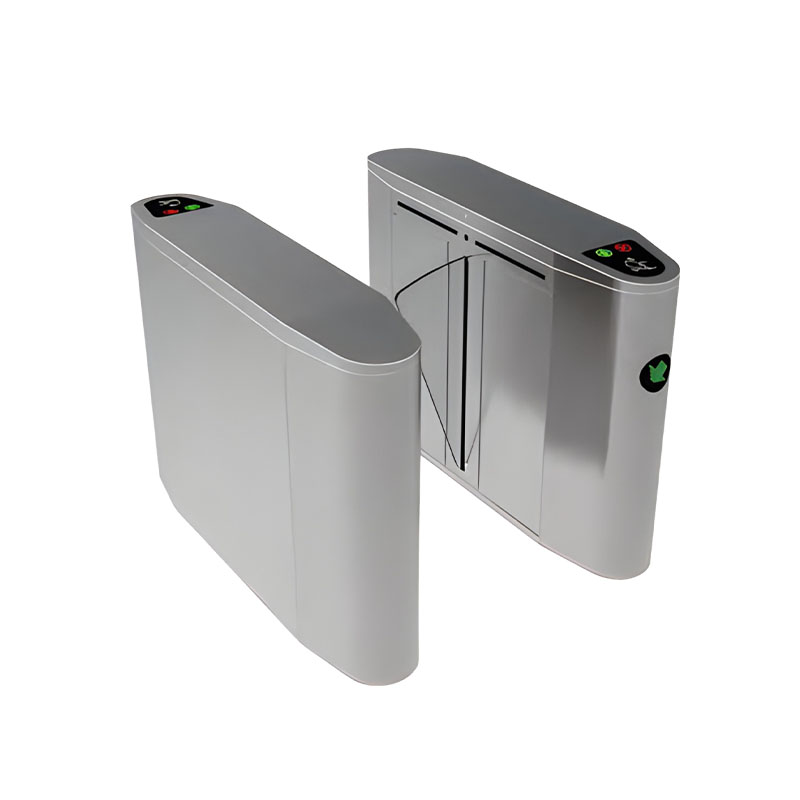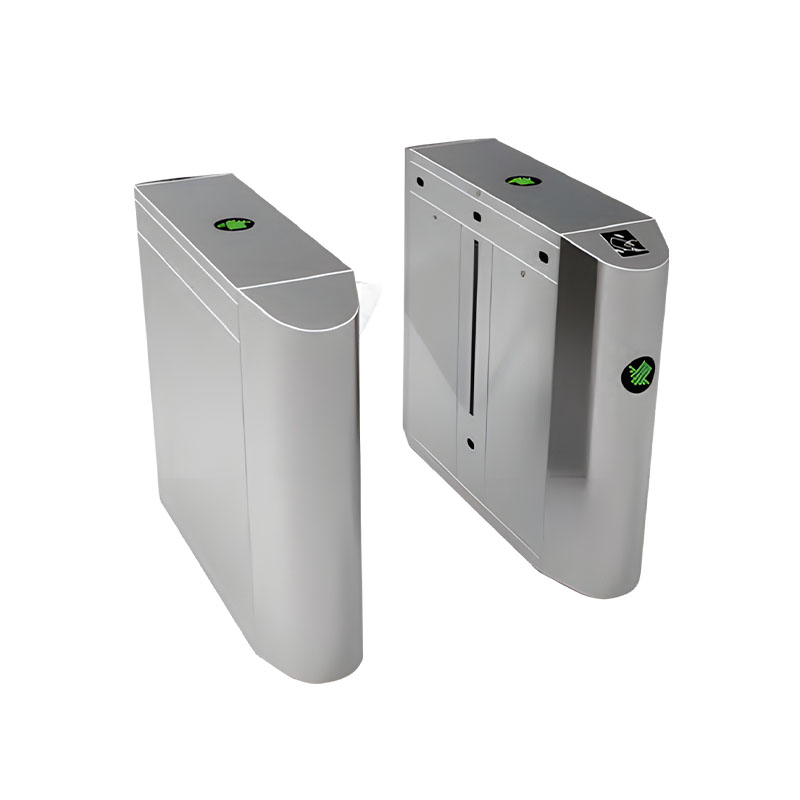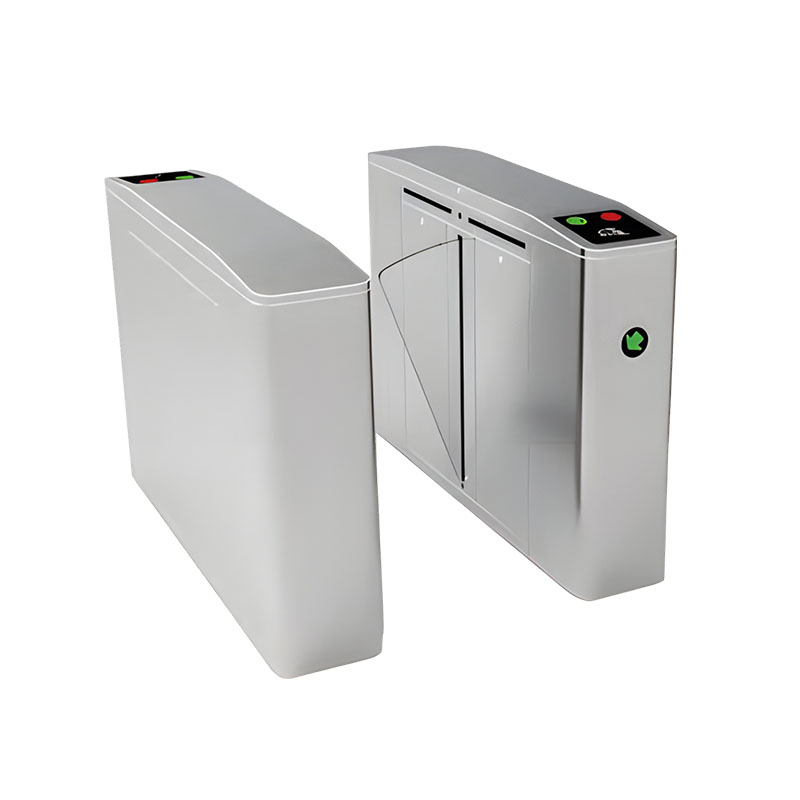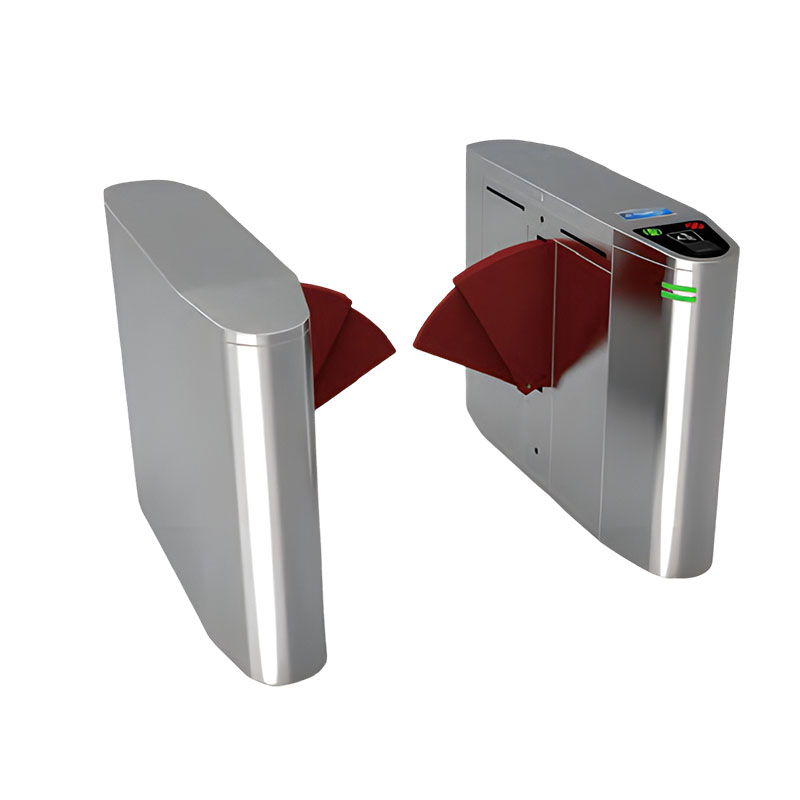How does a pedestrian access gate improve the safety of people entering and exiting a specific area?
Release Time : 2025-07-10
As an important part of modern security systems, pedestrian access gates have significantly improved the safety of people entering and exiting a specific area through a variety of advanced technical means and design ideas. It can not only effectively prevent unauthorized entry, but also respond quickly in emergency situations to ensure the safe evacuation of personnel, while providing a convenient and efficient passage experience.
First of all, in terms of identity authentication, pedestrian access gates use a variety of recognition technologies to ensure that only authorized personnel can enter the controlled area. These recognition technologies include but are not limited to card swiping, fingerprint recognition, face recognition, and QR code scanning. Each recognition method has its own unique advantages and can be flexibly combined according to specific application scenarios. For example, the card swiping system is simple and easy to use, suitable for occasions that require quick passage; while face recognition provides higher security because it can accurately identify personal facial features and is almost impossible to be forged or impersonated. In addition, some high-end devices also support multi-factor authentication, combining two or more recognition methods to further improve security.
In addition to powerful identity authentication functions, pedestrian access gates are also equipped with advanced anti-tailgating detection technology. This technology uses sensors and intelligent algorithms to monitor the dynamic situation in the channel in real time. Once an unauthorized person attempts to follow a legitimate user to enter, the system will immediately trigger an alarm and take corresponding measures. For example, closing the gate or notifying security personnel to intervene. This method not only effectively prevents illegal intrusions, but also greatly enhances the overall security protection level.
In terms of hardware design, pedestrian access gates also focus on improving security. The selection of sturdy and durable materials and the carefully designed structure give it good anti-destruction performance. Both stainless steel frames and tempered glass panels can resist external violent attacks such as impact or prying to a certain extent. In addition, some models of pedestrian access gates are also equipped with an automatic locking mechanism. When abnormal operation is detected, the gate will automatically lock to prevent any unauthorized opening attempts. This provides an additional security barrier for key areas to ensure the safety of the internal environment.
In order to deal with emergencies, pedestrian access gates usually have a complete emergency response mechanism. For example, in the event of a fire or other emergency, the system can be linked with the fire control system in the building to automatically open all channels to ensure that people can evacuate quickly and safely. In addition, some devices are equipped with manual unlocking devices to ensure unobstructed access even in the event of a power outage. These designs take into full account various possible situations in practical applications and maximize the safety of personnel.
It is worth mentioning that the pedestrian access gate can also be integrated with other security systems to form a more comprehensive security protection network. For example, it can be seamlessly connected with video surveillance systems, alarm systems, and access control management systems to achieve information sharing and collaborative work. When a system detects an abnormal situation, other related systems will also receive alarm information synchronously and respond according to the preset program. This multi-level security protection system greatly enhances the security of the entire area, making it difficult for potential threats to escape the monitoring range.
In daily management, pedestrian access gate also provides many conveniences for managers. Through the built-in software platform, administrators can easily set permission rules, view access records, and generate various statistical reports. These features not only simplify workflows such as visitor management and employee attendance, but also help to promptly discover and deal with safety hazards. For example, by analyzing access records, managers can quickly locate suspicious activities and take corresponding preventive measures. In addition, some intelligent pedestrian access gates also support remote control and mobile terminal operation, making management more flexible and efficient.
Finally, considering the special needs in different scenarios, the design of pedestrian access gates also reflects a high degree of flexibility and adaptability. Whether it is a commercial office building, an airport station or a stadium and other crowded places, you can find a solution that suits your own characteristics. For example, in response to the need for barrier-free access, some models are equipped with a wide channel design or a dedicated wheelchair channel to facilitate the smooth passage of people with limited mobility; while for high-traffic areas, you can choose a high-speed swing gate or a wing gate to improve traffic efficiency. These humanized designs fully demonstrate the people-oriented concept, while also ensuring that the best security protection effect can be achieved in all scenarios.
In summary, pedestrian access gates have significantly improved the safety of people entering and exiting a specific area at multiple levels through multiple authentication technologies, anti-tailing detection mechanisms, rugged hardware designs, and perfect emergency response measures. With the continuous advancement of technology and the increasing diversification of application scenarios, it is believed that pedestrian access gates will play an important role in more fields in the future, bringing more reliable security guarantees to people's lives and work.
First of all, in terms of identity authentication, pedestrian access gates use a variety of recognition technologies to ensure that only authorized personnel can enter the controlled area. These recognition technologies include but are not limited to card swiping, fingerprint recognition, face recognition, and QR code scanning. Each recognition method has its own unique advantages and can be flexibly combined according to specific application scenarios. For example, the card swiping system is simple and easy to use, suitable for occasions that require quick passage; while face recognition provides higher security because it can accurately identify personal facial features and is almost impossible to be forged or impersonated. In addition, some high-end devices also support multi-factor authentication, combining two or more recognition methods to further improve security.
In addition to powerful identity authentication functions, pedestrian access gates are also equipped with advanced anti-tailgating detection technology. This technology uses sensors and intelligent algorithms to monitor the dynamic situation in the channel in real time. Once an unauthorized person attempts to follow a legitimate user to enter, the system will immediately trigger an alarm and take corresponding measures. For example, closing the gate or notifying security personnel to intervene. This method not only effectively prevents illegal intrusions, but also greatly enhances the overall security protection level.
In terms of hardware design, pedestrian access gates also focus on improving security. The selection of sturdy and durable materials and the carefully designed structure give it good anti-destruction performance. Both stainless steel frames and tempered glass panels can resist external violent attacks such as impact or prying to a certain extent. In addition, some models of pedestrian access gates are also equipped with an automatic locking mechanism. When abnormal operation is detected, the gate will automatically lock to prevent any unauthorized opening attempts. This provides an additional security barrier for key areas to ensure the safety of the internal environment.
In order to deal with emergencies, pedestrian access gates usually have a complete emergency response mechanism. For example, in the event of a fire or other emergency, the system can be linked with the fire control system in the building to automatically open all channels to ensure that people can evacuate quickly and safely. In addition, some devices are equipped with manual unlocking devices to ensure unobstructed access even in the event of a power outage. These designs take into full account various possible situations in practical applications and maximize the safety of personnel.
It is worth mentioning that the pedestrian access gate can also be integrated with other security systems to form a more comprehensive security protection network. For example, it can be seamlessly connected with video surveillance systems, alarm systems, and access control management systems to achieve information sharing and collaborative work. When a system detects an abnormal situation, other related systems will also receive alarm information synchronously and respond according to the preset program. This multi-level security protection system greatly enhances the security of the entire area, making it difficult for potential threats to escape the monitoring range.
In daily management, pedestrian access gate also provides many conveniences for managers. Through the built-in software platform, administrators can easily set permission rules, view access records, and generate various statistical reports. These features not only simplify workflows such as visitor management and employee attendance, but also help to promptly discover and deal with safety hazards. For example, by analyzing access records, managers can quickly locate suspicious activities and take corresponding preventive measures. In addition, some intelligent pedestrian access gates also support remote control and mobile terminal operation, making management more flexible and efficient.
Finally, considering the special needs in different scenarios, the design of pedestrian access gates also reflects a high degree of flexibility and adaptability. Whether it is a commercial office building, an airport station or a stadium and other crowded places, you can find a solution that suits your own characteristics. For example, in response to the need for barrier-free access, some models are equipped with a wide channel design or a dedicated wheelchair channel to facilitate the smooth passage of people with limited mobility; while for high-traffic areas, you can choose a high-speed swing gate or a wing gate to improve traffic efficiency. These humanized designs fully demonstrate the people-oriented concept, while also ensuring that the best security protection effect can be achieved in all scenarios.
In summary, pedestrian access gates have significantly improved the safety of people entering and exiting a specific area at multiple levels through multiple authentication technologies, anti-tailing detection mechanisms, rugged hardware designs, and perfect emergency response measures. With the continuous advancement of technology and the increasing diversification of application scenarios, it is believed that pedestrian access gates will play an important role in more fields in the future, bringing more reliable security guarantees to people's lives and work.







